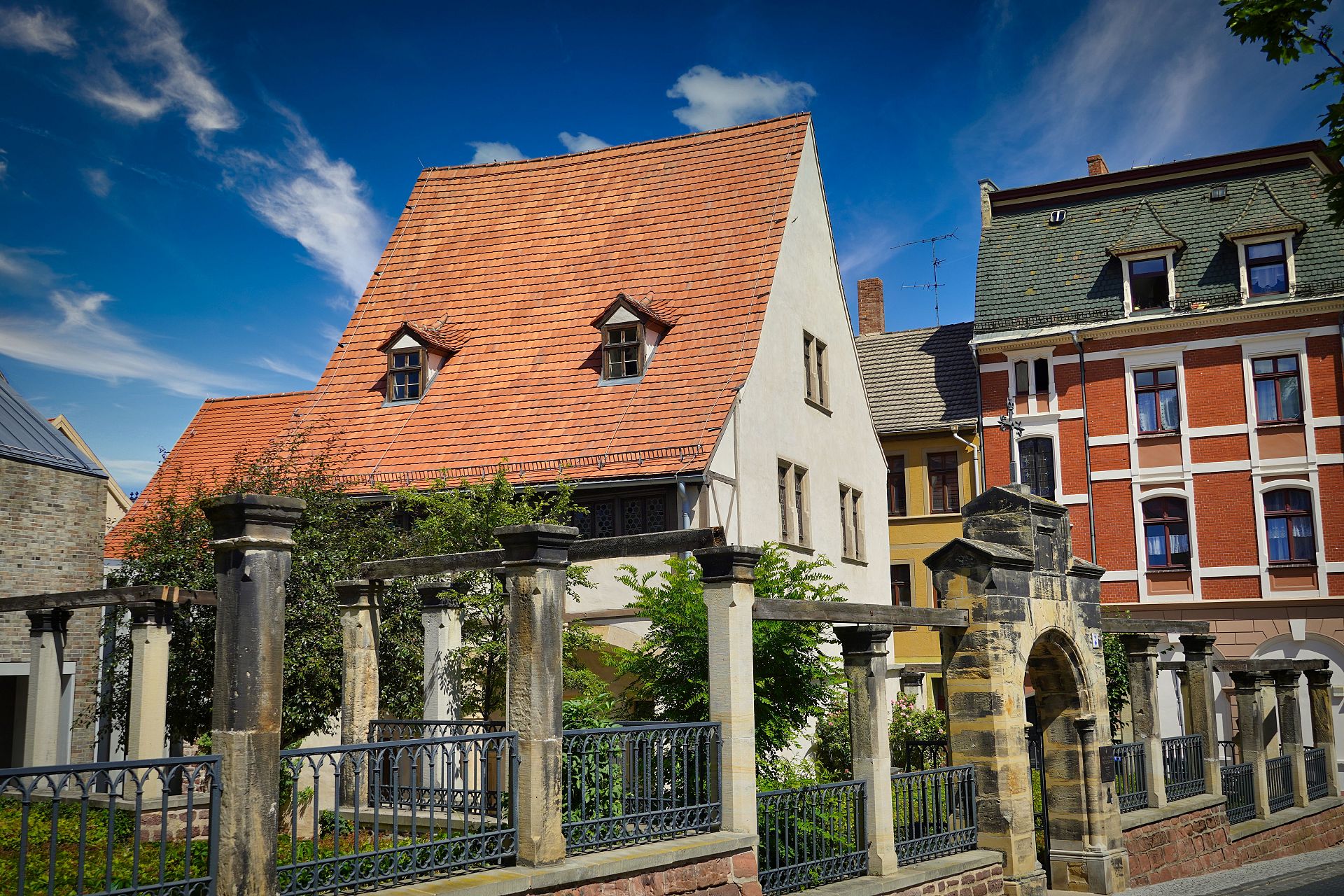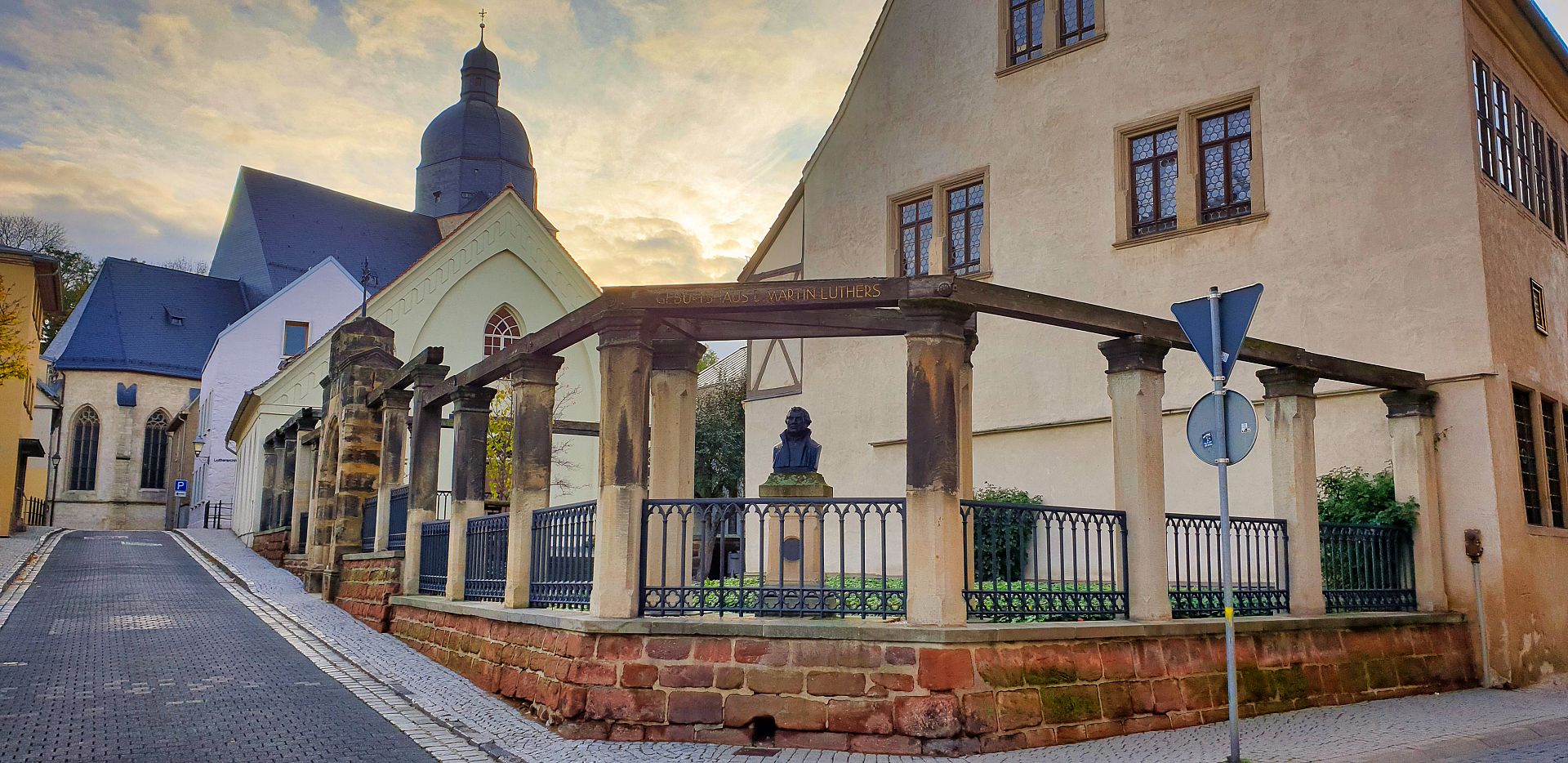Eisleben Luther's birthplace/territorial house
Luther's birthplace
Entering the courtyard of Luther's birthplace through the archway on Lutherstraße, one finds oneself in a harmoniously designed garden: trees blossom between stone walls and, in front of the house, sandstone arcades support a medieval-looking half-timbered structure with bull's-eye glass panes.
Behind the inviting façade is one of the oldest memorials in Germany. Martin Luther, the son of a miner, was revered in Eisleben even during his lifetime - even though he never lived in the town itself for any length of time. Born on 10 November 1483, his parents left the town with the infant shortly afterwards. In 1689, a fire destroyed the house where he was born. A little later, a more representative "memorial building" was rebuilt and maintained over the centuries as a museum and a school for the poor. The courtyard, for example, was also redesigned by the architect Friedrich August Stüler in 1867.
Today, the birthplace, together with the residential house, the former school building and an award-winning new connecting building, forms a horseshoe-shaped ensemble with a large exhibition area. The permanent exhibition "From Hence I Am - Martin Luther and Eisleben" presents the life of the town of which Luther said "My fatherland was Eisleben" from the reformer's point of view. The birthplace is part of the UNESCO World Heritage Site.
Luther's Death House
Luther's last work becomes a work of reconciliation. The Mansfeld counts call him to Eisleben to settle their disputes. He lives in the house of the master smelter Dr. Philipp Drachstedt, Markt 56, where he also dies on 18 February 1546.
Today this house is the "Museum Luthers Sterbehaus" (Museum of Luther's Death) and offers insights into the last days and hours of the reformer in Eisleben with the exhibition "Luther's Last Path". The exhibition sheds light on Luther's confrontation with the subject of death and dying and focuses on Luther as a mourner and sufferer, as a comforter and pastor. One of the most important exhibits is the original pall that covered Luther's coffin on its way from St. Andrew's Church in Eisleben to Wittenberg in 1546.

